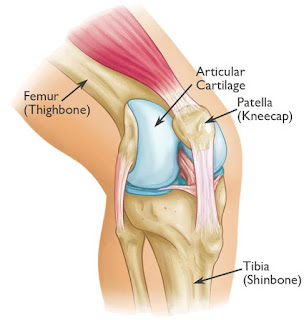HEEL SPUR
PLANTAR FASCIITIS & CALCANEAL
SPUR (HEEL SPUR)
INTRODUCTION:
Plantar
fasciitis is the most common cause of pain on the bottom of the heel. It is the most common among the people nowadays.
Patients getting treatment for this complaint gradually increases. Plantar
Fasciitis occurs when the strong band of tissue that supports the arch of your
foot becomes irritated, calcified and inflamed.
ANATOMY:
The Plantar Fascia is a long, thin ligament
that lies directly beneath the skin on the bottom of your foot. It connects the
heel to the front of your foot, and supports the arch of your foot.
CAUSES:
The Plantar Fascia is designed to absorb the high stress and strain on
your feet. But sometimes, too much pressure damages or tear the tissues. The
body’s natural response to injury is inflammation, which results in the heel
pain and stiffness of plantar fasciitis.
RISK FACTORS:
On most cases Plantar fasciitis without any a specific, identifiable
reason. There are however, many factors that can make prone to the condition.
- Tighter
calf muscles that make it difficult to flex your foot and bring your toes
up toward your shin
- Obesity
- Very high
arch
- Repetitive
impact activity (running/sports)
- New or
increased activity
HEEL SPURS:
Although
many people with plantar fasciitis have heel spurs, spurs are not the cause of
plantar fasciitis pain. One out of 10 people has heel spurs, but only 1 out of
20 people (5%) with heel spurs has foot pain. Because the spur is not the cause
of plantar fasciitis, the pain can be treated without removing the spur.
SYMPTOMS:
The most common symptoms of plantar
fasciitis include:
- Pain on
the bottom of the foot near the heel.
- Pain with
the first few steps after getting out of bed in the morning, or after a
long period of rest, such as after a long car ride. The pain subsides
after a few minutes of walking.
- Greater
pain after (not during) exercise or activity.
EXAMINATION:
After you describe your symptoms and
discuss your concerns, doctor will examine your foot. Doctor will look for
these signs:
- A high
arch.
- An area of
maximum tenderness on the bottom of your foot, just in front of your heel
bone.
- Pain that
gets worse when you flex your foot and the doctor press/pushes on the
plantar fascia. The pain improves when you point your toes down.
- Limited
"up" motion of your ankle.
TESTS:
Ø X-rays: X-rays
provide clear images of bones. They are useful in ruling out other causes of
heel pain, such as fractures or arthritis. Heel spur can be seen in this x-ray
Ø Other Imaging Tests: Other
imaging tests, such as magnetic resonance imaging (MRI) and ultrasound, are not
routinely used to diagnose plantar fasciitis. They are rarely ordered. An MRI
scan may be used if the heel pain is not relieved by initial treatment methods.
TREATMENT:
Ø Non-Surgical Treatment:
·
Rest
·
Contrast
bath for the foot
·
NSAIDs
·
Exercise
ü Calf strength
ü Plantar Fascia strength
·
Cortisone
Injection ( is ONLY advisable in CHRONIC stage)
·
Supportive
Shoes and Orthotics: Shoes with thick soles and extra cushioning can
reduce pain with standing and walking. As you step and your heel strikes the
ground, a significant amount of tension is placed on the fascia, which causes micro
trauma (tiny tears in the tissue). A cushioned shoe or insert reduces this
tension and the micro trauma that occurs with every step. Soft silicone heel
pads are inexpensive and work by elevating and cushioning your heel. Pre-made
or custom orthotics (shoe inserts) are also helpful.
Ø Surgical Treatment:
·
Surgery is considered only after 12 months of
aggressive nonsurgical treatment.
--THE
END--









This comment has been removed by the author.
ReplyDeleteI still need to learn about heel spur treatment in Singapore. I'm scared of what might happen to my heal if I will the spur past.
ReplyDeleteThank you for posting this blog, this is very helpful. You might want to check - https://qrclinicvancouver.com/conditions-treated/foot-toe-pain-treatment/
ReplyDelete